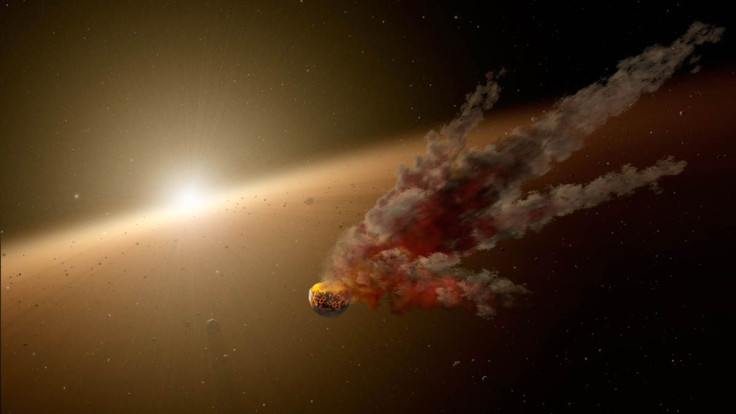Asteroid Day 2015: Experts Call For Acceleration In Efforts To Detect, Track Near-Earth Asteroids

Despite what the 1998 Hollywood movie "Armageddon" showed, countering the potential threat posed to Earth by asteroids is not a job Bruce Willis can do on his own. Realizing this, a team of scientists, technologists, astronomers and artists have signed a declaration calling for a hundred-fold increase in the discovery and tracking of near-Earth asteroids over the next 10 years.
The so-called “100X Declaration” -- released to mark the world’s first “Asteroid Day” -- has been already signed by a host of luminaries, including Bill Nye, Chris Hadfield, Brian Cox, Richard Dawkins and Soviet cosmonaut Alexey Leonov.
“There are a million asteroids in our solar system that have the potential to strike Earth and destroy a city, yet we have discovered less than 10,000 -- just one percent -- of them,” the declaration states. “We have the technology to change that situation.”
Asteroids, the large, rocky objects orbiting the sun, are remnants of our solar system’s turbulent, formative years. In addition to the asteroids that make up the asteroid belt between Mars and Jupiter, there is a swarm of bodies that cross the Earth’s orbit. These near-Earth asteroids are the ones that have the potential to strike the planet and destroy a city, the scientists warned.
“An asteroid 140 meters across (one that would fit inside a high school sports stadium) packs an impact energy of about 100 megatons of TNT, which is nearly five times larger than all the bombs used in WWII,” organizers of the Asteroid Day events said, in a statement posted on their website. “The consequences of such an impact would be devastating, especially in today’s highly interconnected world, let alone the direct destruction in the area of impact.”
Although Earth, in its 4.5-billion year history, has been regularly pummeled -- and even shaped -- by asteroids, the largest event in recorded history took place on June 30, 1908, when an asteroid, about 130 feet in diameter, exploded over Tunguska in Siberia. The “Tunguska event” is believed to have flattened 800 square miles of the Siberian forest.
“Had the impact occurred in a more populated region of the planet, say New York or London, millions of people would have been killed without any warning,” the organizers said in the statement.
Asteroid Day, which marks the anniversary of the Tunguska event, aims to raise awareness about the importance of monitoring asteroids through a series of events across the globe. Scientists hope that a number of proposed projects, including NASA’s Neocam, University of Hawaii’s Asteroid Terrestrial-Impact Last Alert System (Atlas), and the privately funded Sentinel Space Telescope, would significantly advance the capability to prevent asteroid impacts.
“We are optimistic that Asteroid Day will bring an informed focus on the need to allocate more resources to finding and tracking NEOs [Near-Earth Objects]. The orbits of these objects need to be accurately determined so that we can identify whether any of them presents an impact threat to our planet in the next 100 years,” the organizers said.
© Copyright IBTimes 2024. All rights reserved.






















